The nuclear baton of the US Navy (part 2)
American admirals are also interested in cruise missiles that could be used both on surface ships and on submarines. In order to save money, the US Navy was asked to use for its own purposes the practically ready "Matador", created for the Air Force. However, naval experts were able to justify the need to design a special rocket that meets the specific maritime requirements. The main argument of admirals in a dispute with government officials was the lengthy preparation of the "Matador" for launch. So during the pre-launch preparation for MGM-1 it was necessary to dock the launch solid-fuel boosters, in addition, for targeting the Matador to the target, a network of radio beacons or at least two ground stations equipped with radars and command transmitters was required.
I must say that in the post-war period, the development of cruise missiles did not start from scratch. At the end of 1943, the US military signed a contract with the Chance Vought Aircraft Company to develop a jet-projectile with a launch range of 480 km. However, due to the lack of suitable jet engines, the complexity of creating a guidance system and overloading with military orders, work on a cruise missile was frozen. However, after the creation of the MGM-1947 Matador began in the interests of the Air Force in 1, the admirals caught on and formulated the requirements for a cruise missile suitable for deployment on submarines and large surface ships. The rocket with a launch weight of no more than 7 tons was supposed to carry a 1400 kg warhead, the maximum firing range was no less than 900 km, the flight speed was up to 1 M, the circular probable deviation was no more than 0,5% of the flight range. Thus, when launching at a maximum range, the rocket must fall into a circle with a diameter of 5 km. Such accuracy allowed to hit large area targets - mainly large cities.
Aircraft manufacturer Chance Vought built the SSM-N-8A Regulus cruise missile, designed for the Navy, in parallel with the work carried out by Martin Aircraft on the ground-based cruise missile MGM-1 Matador. The missiles had a similar appearance and the same turbojet engine. Their characteristics also hardly differed. But unlike the “Matador”, the fleet Regulus was preparing to start faster and could be guided to the target with the help of one station. In addition, the company "Vout" has created a test reusable rocket, which significantly reduced the cost of the test process. The first test launch took place in March 1951.
The first ships armed with the Regulus cruise missiles were the Tunny (SSG-282) and Barao-type diesel-electric submarines built during the Second World War and upgraded in the post-war period.
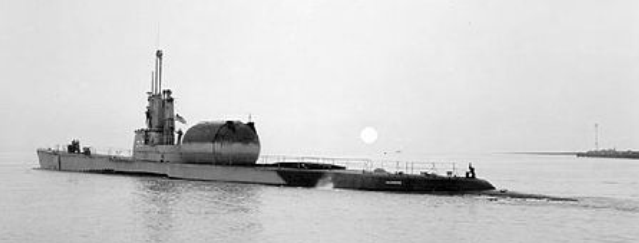
Diesel submarine Barbero (SSG-317) after conversion into the carrier of SSM-N-8A Regulus cruise missiles
Behind the cabin of the submarine a hangar was installed on two cruise missiles. For launch, the rocket was transferred to the launcher in the stern of the boat, after which the wing was collapsed and the turbojet engine was launched. The launch of the missiles was carried out in the surface position of the boat, which significantly reduced the chances of survival and the performance of the combat mission. Despite this, the "Tanni" and "Barbero" were the first US Navy submarines to go on combat duty with missiles equipped with nuclear warheads. Since the first missile submarines converted from torpedo boats with a 2460 displacement and the first missile submarines had a modest autonomy, and the bulky rocket hangar worsened the already not too high road performance, in 1958, they were joined by special-built boats: USS Grayback (SSG-574) and USS Growler (SSG-577). In January, the USN Halibut submarine (SSGN-1960) with five missiles on board entered the fleet 587.
Between October 1959 and July 1964, these five 40 boats took part in combat patrols in the Pacific. The main targets for cruise missiles were Soviet naval bases in Kamchatka and Primorye. In the second half of 1964, the boats armed with the Regulus were removed from combat duty and replaced by SSBNs like George Washington, with the UGM-16 Polaris 27 SLBM.
In addition to submarines, the carriers of the SSM-N-8A Regulus KR were four heavy cruisers of the Baltimore type, as well as 10 aircraft carriers. Cruisers and some aircraft carriers also went on combat patrols with cruise missiles on board.
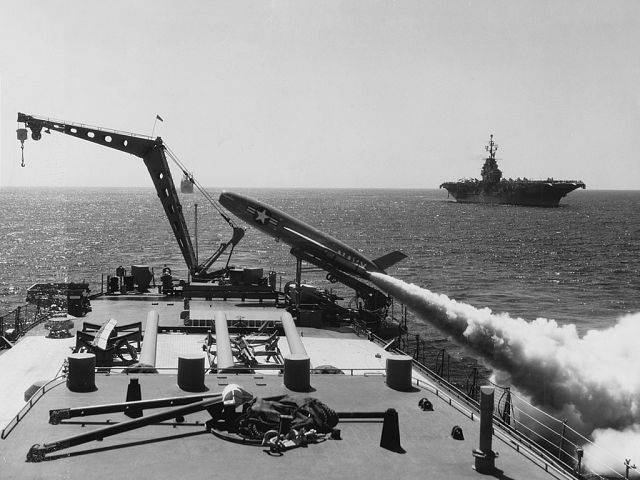
Serial production of the Regulus cruise missiles ceased in January 1959. A total of 514 instances were built. Although the first test launch from a submarine took place in the 1953 year, and the official adoption for service in the 1955 year, in 1964, the missile was removed from service. This was due to the fact that submarine nuclear-powered submarines with the Polaris A1, capable of shooting underwater, had many times greater shock power. In addition, by the time the 60s began, the available cruise missiles were hopelessly outdated. Their speed and altitude did not guarantee a breakthrough of the Soviet air defense system, and low accuracy prevented their use for tactical purposes. Subsequently, some cruise missiles were converted into radio-controlled targets.
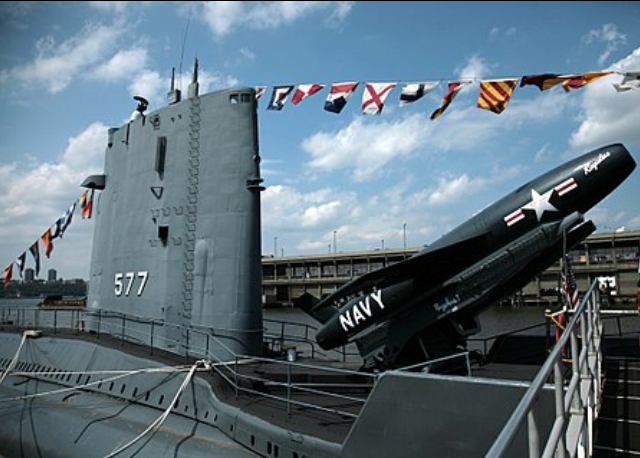
SSM-N-8A Regulus cruise missile on the USS Growler Museum Boat (SSG-577) at the "eternal stop" at 86 Pier in New York
With a launch weight of 6207 kg, the rocket had a length of - 9,8 m and a diameter of - 1,4 m. Wingspan - 6,4 m. The Allison J33-A-18 turbojet with 20 kN thrust provided the cruising flight speed of 960 km / h. For launch, two detachable solid-fuel accelerators with a total load of 150 kN were used. The onboard supply of aviation kerosene 1140 liters provided the maximum launch range - 930 km. The missile originally carried a nuclear warhead W5 55 power kt. Since 1959, the W27 thermonuclear warhead with a capacity of 2 Mt has been installed on the Regulus.
The main disadvantages of the SSM-N-8A Regulus rocket were: a relatively small firing range, subsonic flight speed at high altitude, radio command control, which required constant tracking by radio from the carrier ship. In order to successfully complete a combat mission, the carrier ship had to come close enough to the coast and control the flight of the cruise missile until the moment it hits the target, remaining vulnerable to the enemy’s countermeasures. Significant QUO prevented effective use against highly targeted point targets.
In order to eliminate all these shortcomings, the company Chance Vought by 1956, created a new model of a cruise missile: SSM-N-9 Regulus II, which was to replace the earlier “Regulus”. The first launch of the prototype took place on 29 on May 1956 of the year at Edwards Air Base. A total of 48 SSM-N-9 Regulus II test launches were performed, including 30 successful and 14 partially successful.
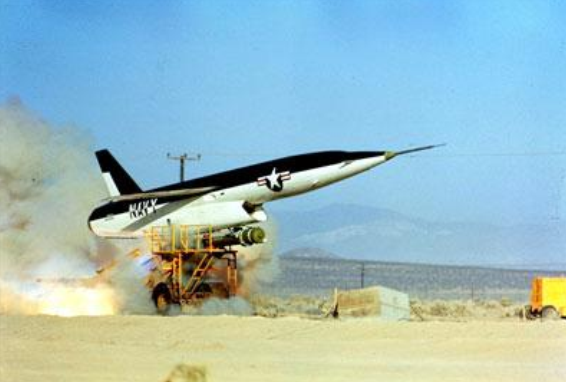
Compared with the early model, the aerodynamics of the rocket was seriously improved, which, combined with the use of the General Electric J79-GE-3 engine with 69 kN, significantly improved flight data. Maximum flight speed reached 2400 km / h. At the same time, the rocket could fly at an altitude of up to 18000. The launch range was 1850 km. Thus, the maximum airspeed and range were able to increase more than twice. But the starting weight of the SSM-N-9 Regulus II rocket compared to the SSM-N-8A Regulus has almost doubled.
Thanks to the inertial control system, the Regulus II was not dependent on the carrier ship after launch. During the tests, it was proposed to equip the missile with a promising guidance system TERCOM, which worked on the basis of a preloaded radar map of the terrain. In this case, the deviation from the aiming point should not exceed a few hundred meters, which, in combination with the megaton class thermonuclear warhead, ensured the defeat of fortified targets, including ballistic missile mines.
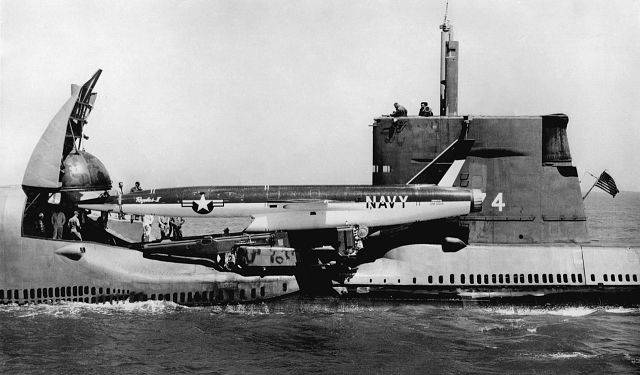
Preparations for the test launch of the SS SSM-N-9 Regulus II from the board of the USS Grayback submarine (SSG-574)
According to the results of tests in January 1958, the navy issued an order for mass production of missiles. It was envisaged that the ships already equipped with cruise missiles would be reequipped with the Regulus II missiles, and the massive construction of submarines carrying cruise missiles would begin. According to the original plans, the fleet command was going to arm twenty-five diesel-electric and atomic submarines and four heavy cruisers with SSM-N-9 Regulus II cruise missiles. However, despite the sharply increased flight and combat performance, in November 1958, the missile program was curtailed. The fleet refused the updated Regulus due to the successful implementation of the Polaris program. Ballistic missiles with a greater range of flight, invulnerable to the existing air defense systems and launched from a submerged boat, looked much more preferable than cruise missiles launched at the surface position. In addition, the ammunition of the Kyrgyz Republic even on the nuclear-powered Khalibat was three times less than the number of SLBMs on the SSBN of the George Washington type. Theoretically, the Regulus II supersonic cruise missiles could enhance the armament of heavy cruisers built during the Second World War, and thus prolong the life of these ships. But this was hampered by the high cost of rockets. The American admirals considered that the price for one cruise missile more than $ 1 million is excessive. At the time of the decision to abandon the Regulus II, 20 rockets were built and 27 were in the process of being assembled. As a result, these missiles were converted into supersonic unmanned targets MQM-15A and GQM-15A, which were used by the US military during the control and training launches of the CIM-10 Bomarc long-range unmanned interception complex.
After abandoning the Regulus, US admirals lost interest in cruise missiles for a long time. As a result, by the beginning of the 70s, a significant gap appeared in the armament of American surface ships and submarines. The strategic objectives of nuclear deterrence were carried out by very expensive nuclear submarines with ballistic missiles, and tactical atomic bombs were laid on deck aircraft aviation. Of course, on surface ships and submarines there were nuclear depth bombs and torpedoes, but against land objects deep in enemy territory, this weapon was useless. Thus, a significant part of the large US Navy, potentially capable of solving strategic and tactical nuclear missions, turned out to be offside.
According to American experts, made at the end of 60-x, the progress made in the field of miniaturization of nuclear charges, solid-state electronics and compact turbojet engines, in the future, allowed to create long-range cruise missiles suitable for launch from standard 533-mm torpedo tubes. In 1971, the US Navy commenced work to explore the possibility of creating a strategic submarine-launched cruise missile, and in June 1972 gave the go-ahead to practical work on the SLCM CD (eng. Submarine-Launched Cruise Missile). After studying the project documentation, General Dynamics and Chance Vought with prototypes of ZBGM-109A and ZBGM-110A cruise missiles were allowed to participate in the competition. Both prototype tests began in the first half of 1976. Taking into account the fact that the sample proposed by General Dynamics showed the best results and had a more refined structure, in March 1976, the winner was declared the KR ZBGM-109A, which in the fleet was named Tomahawk (Eng. Tomahawk). At the same time, the admirals decided that the Tomahawk should become part of the armament of surface ships, so the designation was changed to Sea-Launched Cruise Missile — a sea-based cruise missile. Thus, the acronym SLCM began to reflect the more universal nature of the deployment of a promising cruise missile.
For precise targeting of the BGM-109A to the fixed target with previously known coordinates, it was decided to use the TERCOM radar relief correction system (English Terrain Contour Matching), the equipment of which was originally designed for navigation and the ability of manned combat aircraft to fly at extremely low altitudes in automatic mode.
The principle of operation of the TERCOM system is that the photographs and the results of the radar scan, made with the help of reconnaissance spacecraft and reconnaissance aircraft equipped with side-looking radars, compile electronic terrain maps. Subsequently, these maps can be used in the preparation of the flight route of cruise missiles. Information about the selected route is pumped into the information storage of the onboard computer, available on board the cruise missile. After launch, at the first stage, the rocket is controlled by an inertial navigation system. The inertial platform provides location determination with an accuracy of 0,8 km per 1 flight hour. In correction areas, the data available in the onboard storage unit are compared with the actual terrain, and on the basis of this, the flight course is adjusted. The main components of the AN / DPW-23 TERCOM equipment are: a radar altimeter operating at a frequency of 4-8GHz with a viewing angle of 12-15 °, a set of reference maps of areas along the flight route and an onboard computer. The permissible error of measuring the height of the terrain with reliable operation of the TERCOM system should be 1 m.
According to information published in the American media, the ideal option for the use of Tomahawk cruise missiles for ground targets is that the missiles should be launched at a distance of no more than 700 km from the coastline, and the first correction area should be within 45-50 km. The width of the second correction area should be reduced to 9 km, and near the target to 2 km. To remove restrictions on the areas of correction, it was envisaged that cruise missiles would be received by NAVSTAR satellite navigation system receivers.
The control system provides a cruise missile the ability to fly at low altitudes, following the terrain. This makes it possible to increase the secrecy of the flight and makes it difficult to detect the radar with radar controls the airspace. The choice in favor of a rather expensive TERCOM system, which also requires the use of reconnaissance satellites and radar reconnaissance aircraft, was made on the basis of experience gained during major regional armed conflicts in the Middle East and Southeast Asia. In the second half of the 60's early 70-x, Soviet-made anti-aircraft defenses clearly demonstrated that the high altitude and speed of flight of combat aircraft are no longer the key to invulnerability. Having suffered significant losses, the American and Israeli warplanes were forced in the zones of action of the air defense system to go to flights at extremely low altitudes - hiding in the folds of the area, below the working heights of surveillance radars and guidance stations of anti-aircraft missiles.
Thus, thanks to the possibility of flying at extremely low altitudes, fairly compact cruise missiles with relatively small EPR, in the case of mass use, had good chances to overwhelm the Soviet air defense system. Long-range carriers of the Kyrgyz Republic could be multi-purpose nuclear submarines, numerous cruisers and destroyers. In the case of equipping cruise missiles with thermonuclear charges, they could be used for a disarming strike on headquarters, missile silos, naval bases and air defense command and control points. According to information published in open sources, American experts involved in nuclear planning, taking into account the ratio of hit accuracy and warhead power, estimated the probability of hitting a “hard” target that can withstand overpressure 70 kg / cm²: CR AGM-109А - 0,85, and UGM SLBM -73 Poseidon C-3 - 0,1. At the same time, the Poseidon ballistic missile had approximately twice the launch range and was virtually invulnerable to air defense weapons. A significant drawback of the "Tomahawk" was the subsonic flight speed of the rocket, but this had to be reconciled, since the transition to supersonic reduced the flight range and sharply increased the cost of the product itself.
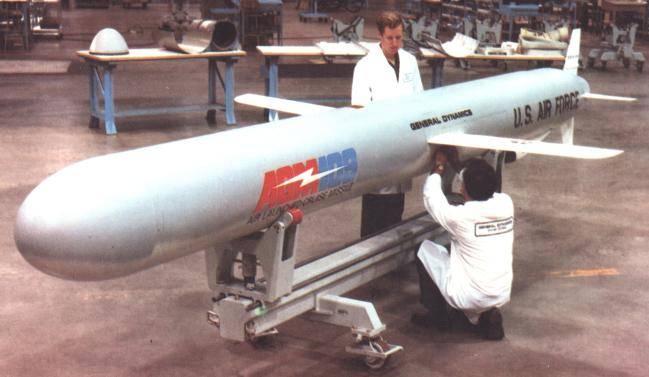
At some stage, the Tomahawk under the JCMP program (the Joint Cruise Missile Project) was also viewed as an air-based cruise missile for arming strategic bombers. The result of the design of the “single” cruise missile was that the aviation engine AGM-86 ALCM, created by Boeing, and the “sea” cruise missile BGM-109A used the same engine and TERCOM guidance system.
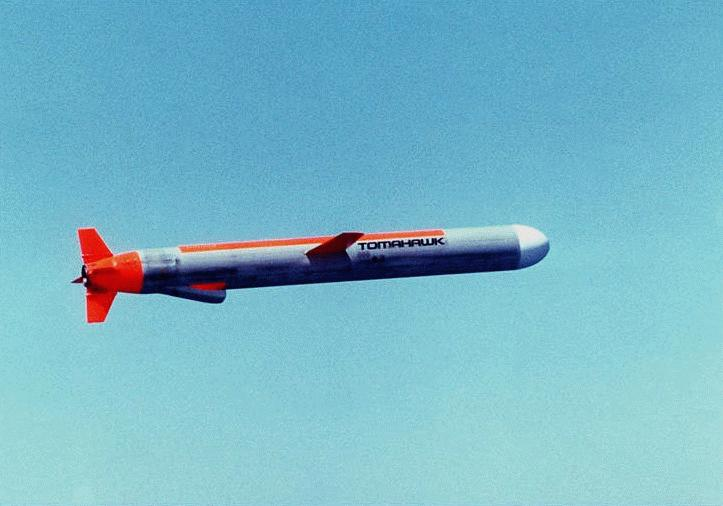
The first launch of the Tomahawk from the ship took place in March 1980, the rocket was launched from the destroyer USS Merrill (DD-976). In June of the same year, a cruise missile was launched from the nuclear submarine USS Guitarro (SSN-665). Before 1983, more than 100 launches were carried out as part of flight and control testing. In March, 1983, the US Navy representatives signed an act of missile operational readiness and recommended the adoption of Tomahawk. The first serial modification of "Tomahawk" was BGM-109A TLAM-N (eng. Tomahawk Land-Attack Missile-Nuclear - "Tomahawk" against ground targets - nuclear). This model, also known as Tomahawk Block I, was equipped with a W80 thermonuclear warhead with stepped explosion power ranging from 5 to 150 CT.
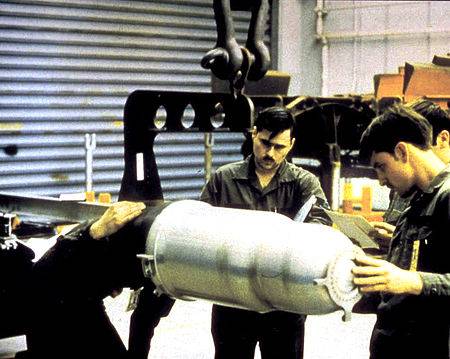
The W80 Thermonuclear Warhead Model 0, mounted on the KR, weighed 130 kg, with a length of 80 cm and 30 diameter, see. Unlike the W80 warhead, the XELUM 1, designed for installation of an AGM-86 ALCM-based air-based KM on an ARM-based AGM-XNUMX ALCM, is a template that has been used by a template that has been used by a XM model. had less radioactivity. This was due to the fact that on the submarine the crew had more frequent and longer contact with cruise missiles than the personnel of the air force.
Initially, modifications of cruise missiles intended for launching from surface ships and submarines were distinguished by a digital suffix. Thus, the BGM-109A-1 / 109B-1 markings had surface launch missiles, and the BGM-109A-2 / 109B-2 - underwater. However, this caused confusion in documents and in 1986, instead of a digital suffix, the letters “R” for missiles launched from surface ships and “U” for launching from submarines began to be used as the first letter of the index.
The first production version of the BGM-109A Tomahawk rocket with a thermonuclear warhead had a length of 5,56 m (6,25 with a starting accelerator), a diameter of 531 mm and a starting mass of 1180 kg (1450 kg with a starting accelerator). After the transition to the working position, the folding wing reached the span of 2,62 m. An economical compact turbojet Williams International F107-WR-402 turbojet engine with a nominal thrust 3,1 kN ensured a cruising flight speed of 880 km / h. For acceleration and climb during the launch, the Atlantic Research MK 106 solid fuel booster was used, providing 37 kN thrust for 6-7 seconds. The length of the solid accelerator - 0,8 m, weight - 297 kg. The stock of kerosene on board the rocket is enough to hit a target at a distance of 2500 km. During the creation of Tomahawk, the specialists of Geniral Dynamic managed to achieve high weight perfection, which, combined with a very lightweight Williams F107 engine, with a 66,2 kg dry weight and a very compact and lightweight thermonuclear warhead, made it possible to achieve a record flight distance.
When placed on surface ships to launch the Tomahawks, armored slant launchers Mk143 were originally used. Recently, cruise missiles on destroyers and cruisers are placed in the universal vertical launchers Mk41.
For an inclined or vertical launch of a rocket, a solid-fuel jet accelerator is used. Immediately after the start, the folding wing is moved to the working position. Approximately after 7 s after the start, the jet booster is separated and the main engine is started. During the launch, the rocket gains 300-400 m height, after which it descends on the launch site with a length of about 4 km and a duration of about 60, and then moves to a predetermined flight path and drops to 15-60 m.
When loaded onto a submarine, the Tomahawk is in a steel hermetic capsule filled with inert gas, which allows the rocket to be maintained in combat readiness for 30 months. The capsule with the rocket is loaded into the 533-mm torpedo tube or into the universal launcher Mk45, like a normal torpedo. The launch is made from the depth of 30-60 m. From the torpedo tube the capsule is ejected with the help of a hydraulic pusher, and from UVP with a gas generator. Through 5 from passing through the underwater section, the starting engine starts, and the rocket emerges from under the water to the surface at an angle of 50 °.
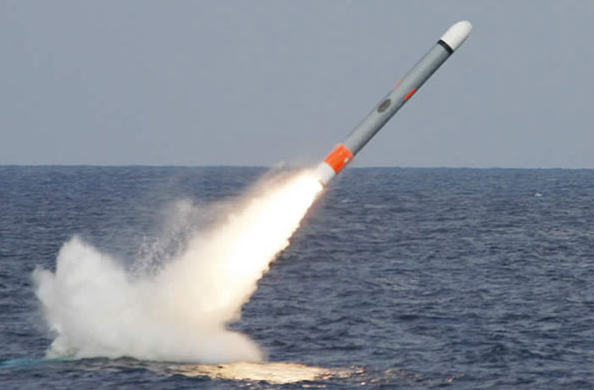
After adopting the naval "Tomahawk" into service, these missiles were deployed on multi-purpose nuclear submarines, cruisers, destroyers, and even on battleships of the "Iowa" type.
The approximate number of BGM-109A Tomahawk cruise missiles delivered to the US Navy can be judged by the number of assembled fusion parts used only on this type of missile. In total, approximately 109 W350 warheads Model 80 were manufactured to equip nuclear cruise missiles BGM-0A Tomahawk. The last Nuclear Axes were dismantled in the 2010 year, but they were removed from combat duty in the 90s.
In addition to the Tomahawks with thermonuclear warheads designed to destroy stationary targets, American warships were equipped with cruise missiles with conventional warheads that could also solve strategic tasks. The first non-nuclear modification was BGM-109C, renamed later to RGM / UGM-109C TLAM-C (eng. Tomahawk Land-Attack Missile - Conventional - Tomahawk missile with conventional warhead for ground attack). This missile carries a robust high-explosive warhead WDU-25 / B weighing 450 kg. Due to the repeated increase in weight of the warhead, the launch range decreased to 1250 km.
Since the AN / DPW-23 TERCOM radar equipment provided accuracy of hitting no higher than 80 meters, this was not enough for a missile with a conventional warhead. In connection with this, the BGM-109C rocket was equipped with AN / DXQ-1 DSMAC (Digital Scene Matching Area Correlation) system. The system allows the rocket to recognize ground objects, matching their image with the “portrait” that is stored in the onboard computer, and carry out aiming at the target with an accuracy of 10 meters.
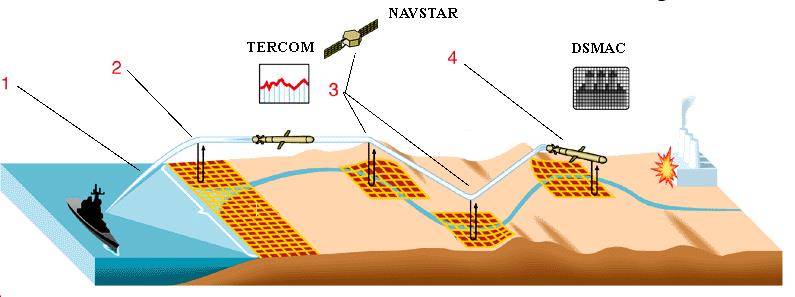
1. plot of flight trajectory after launch
2. first correction area using TERCOM equipment
3. plot with TERCOM correction and using the satellite system NAVSTAR
4. trajectory end portion with DSMAC correction
A guidance system similar to that installed on the BGM-109C has a modification of the BGM-109D. This rocket carries a cluster warhead with 166 submunitions BLU-97 / B and is designed to defeat area targets: enemy troop aggregations, airfields, railway stations, etc. Due to the large mass of the cluster warhead, this Tomahawk modification had a launch range of no more than 870 km.
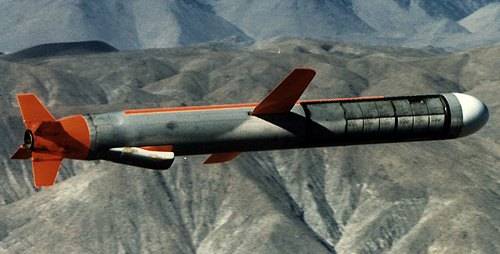
Also in service with the American fleet was listed anti-ship modification RGM / UGM-109B TASM (eng. Tomahawk Anti-Ship Missile - anti-ship missile "Tomahawk") with a guidance system similar to the RGM-84A Harpoon anti-ship missile. The missile was intended to destroy surface targets at a distance of up to 450 km and carried an armor-piercing high-explosive warhead weighing 450 kg. However, in practice, to realize such a range of start-up seemed unrealistic. Due to the relatively low speed of the anti-ship Tomahawk, the flight time to the maximum range took about half an hour. During this time, the target could easily leave the area at which the shooting was carried out. To increase the likelihood of capturing a radar homing head, when entering the target search mode, the rocket had to move with a “snake”, if that didn't help, then the “eight” maneuver was performed. This, of course, helped in part to detect the target, but it also increased the risk of an unintended attack of neutral or friendly ships. In addition to the conventional warheads, at the design stage it was envisaged that part of the anti-ship missiles would be equipped with a nuclear warhead to destroy group targets. But due to the too high risk of an unauthorized nuclear strike, this was abandoned.
For the first time in combat conditions, Tomahawk cruise missiles equipped with conventional combat units were used in 1991 during the anti-Iraqi company. Based on the conclusions made from the results of combat use, the leadership of the American armed forces concluded that cruise missiles are capable of solving a wider range of tasks than originally envisaged. Achievements in the field of composite materials, engine-building and electronics made it possible to create a universal sea-based cruise missile suitable for solving a wide range of tactical tasks, including in close proximity to its troops.
During the implementation of the Tactical Tomahawk program, measures were taken to reduce the radar visibility and cost of the missile in comparison with previous samples. This was achieved through the use of lightweight composite materials and the relatively inexpensive Williams F415-WR-400 / 402 engine. The presence of a satellite communications system with a broadband data channel on board a rocket makes it possible to retarget the rocket in flight to other targets previously memorized in the on-board computer. When a rocket approaches the object of attack, the state of the object is evaluated using a high-resolution television camera installed on board, which allows you to decide whether to continue the attack or redirect the rocket to another target.
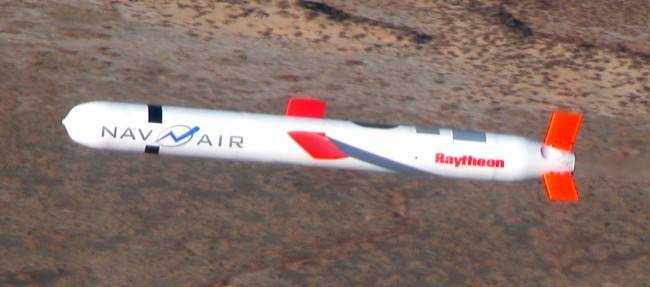
Due to the use of composite materials, the rocket has become more delicate and is not suitable for launching from torpedo tubes. However, submarines equipped with vertical Mk41 launchers can still use Tactical Tomahawk. Currently, this modification "Tomahawk" is the main one in the US Navy. Since 2004, more than 3000 CR RGM / UGM-109E Tactical Tomahawk has been transferred to the customer. In this case, the cost of one rocket is about $ 1,8 million.
According to information published in the US media in 2016, the command of the US Navy has expressed interest in acquiring new cruise missiles equipped with nuclear warheads. Raytheon, which is currently the manufacturer of Tactical Tomahawk, proposed to create a version with a warhead, in its capabilities similar to the B61-11 thermonuclear bomb. The new rocket should have been used all the achievements implemented in the modification of the RGM / UGM-109E Tactical Tomahawk, and penetrating thermonuclear warhead variable power. This missile, when attacking highly protected targets, hidden under the ground, was supposed to dive after making a slide and go deep into the ground for several meters. When the energy release is more than 300 kt, a powerful seismic wave is formed in the soil, which guarantees the destruction of reinforced concrete floors in a radius of more than 500 m. If used against targets on the surface, a nuclear explosion occurs at a height of about 300 m. kt.
However, after analyzing all the options, the American admirals decided to refrain from creating a new nuclear missile based on Tomahawk. Apparently, the leadership of the fleet did not accept subsonic flight speed. In addition, the modernization potential of the rocket, the design of which began over 45 years ago, has almost been exhausted.
To be continued ...
Based on:
http://otvaga2004.ru/fotoreportazhi/voyennye-muzei/regulus-growler/
http://www.designation-systems.net/dusrm/m-15.html
http://www.designation-systems.net/dusrm/m-6.html
http://militaryarticle.ru/tekhnika-i-vooruzhenie/2005/11593-kompleks-polaris-a-2-dalshe-vyshe-bolshe
http://rbase.new-factoria.ru/missile/wobb/bgm109c_d/bgm109c_d.shtml
https://www.forecastinternational.com/archive/disp_pdf.cfm?DACH_RECNO=282
http://www.dogswar.ru/artilleriia/raketnoe-oryjie/1210-raketnyi-kompleks-mo.html
https://soldats.club/oruzhie/301-krylataya-raketa-tomagavk
http://www.designation-systems.net/dusrm/m-109.html
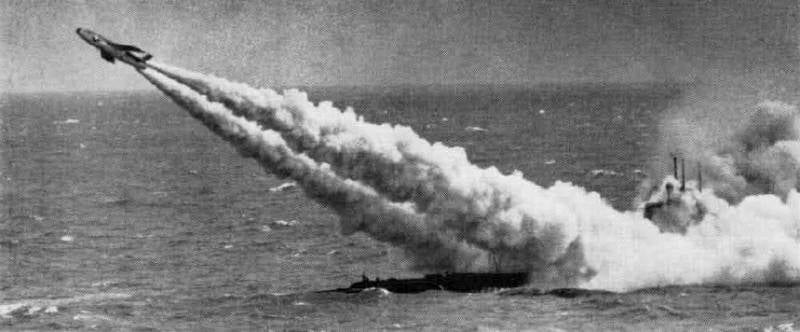
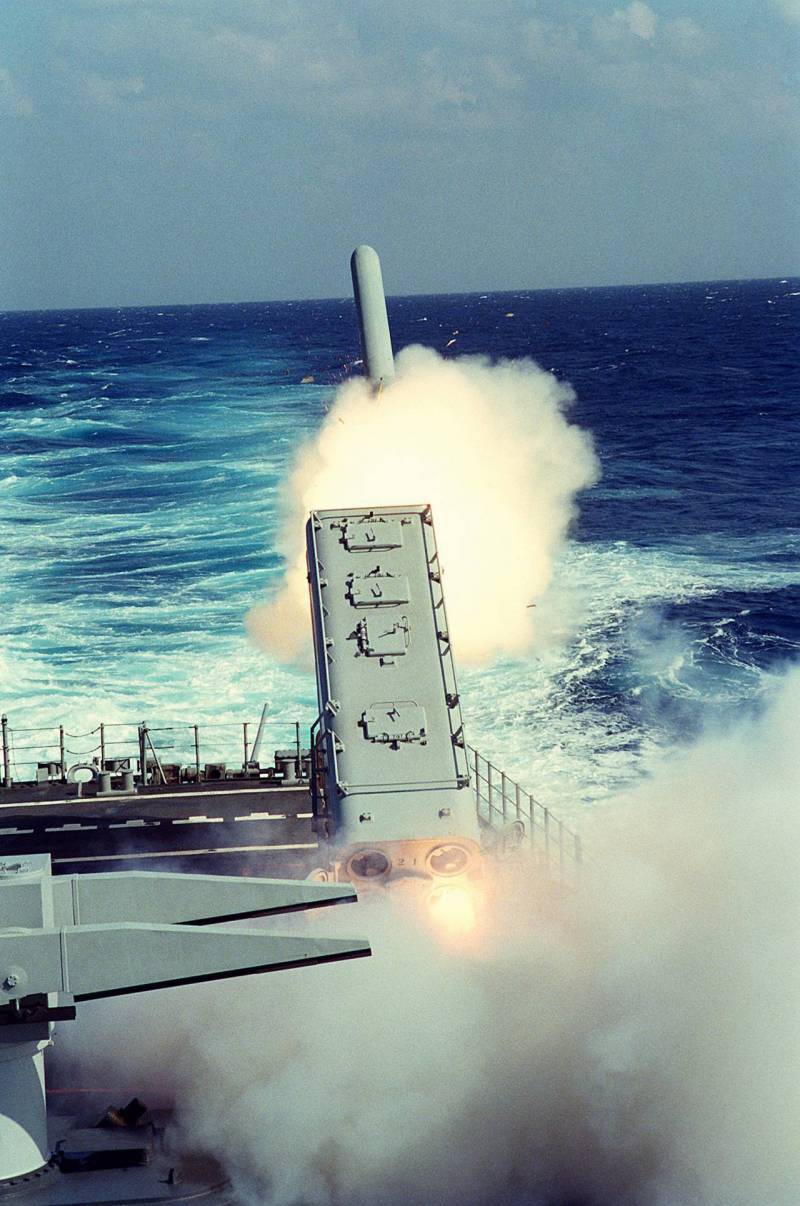
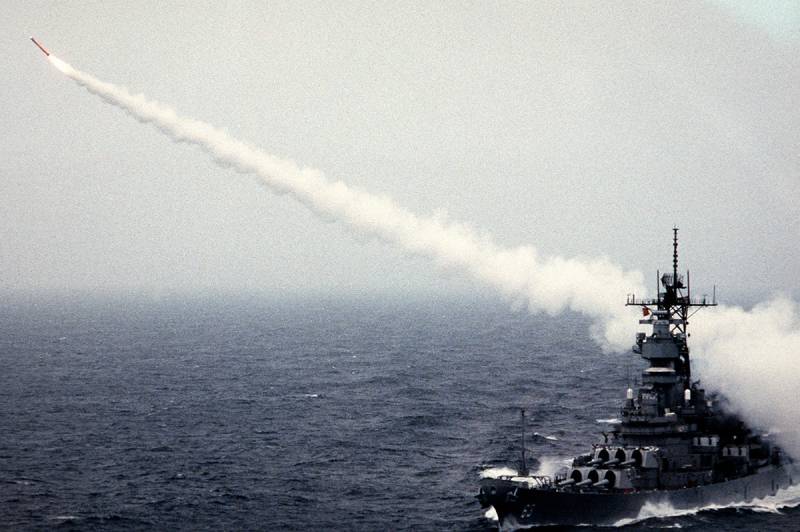
Information